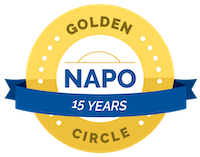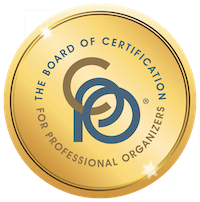Worth repeating: Completing a jigsaw puzzle five pieces at a time

I originally published this post just seven months ago, but since so many people are doing jigsaw puzzles these days, I think it’s worth repeating. I’ve had several people say to me that if they start a puzzle, they can’t pull away from it and will stay up all night until it’s completed. And therefore they don’t do puzzles! Perhaps I’m just wired differently, but I love my five-piece-at-a-time method because I can sneak in small, enjoyable snippets of puzzle-solving without it taking over my day. And this method allows me to extend my enjoyment and savor the puzzle! The picture is of the puzzle I’m currently working on, Washington, DC from White Mountain Puzzles. I’m thoroughly enjoying it. (It makes me want to visit Washington, DC, where I lived for five years after college!)
I enjoy doing jigsaw puzzles. One-thousand-word puzzles are just the right size and my favorite kind to do are collage puzzles. I think I like collages because of all the easy sorting that can be done.
Last month I completed a 1000-word collage puzzle five pieces at a time and mentioned it on Episode 68 of Getting to Good Enough, the podcast I host with Shannon Wilkinson. I’m just about to finish another puzzle using this method, which I devised for myself, and I find the method so successful (and relevant to other parts of my life) that I thought I’d share.
I do jigsaw puzzles at the end of our dining-room table. There’s room there, since there are only two us of eating (unless we have guests). But I don’t want a puzzle to languish there untended. I also don’t have hours a day to devote to doing puzzles. And I don’t want to wreck my productivity on a workday by getting sucked into a puzzle. So here’s what I do.
I start by connecting the edge pieces of the puzzle, which has always been my favorite part of the puzzle. (I can’t imagine working on the interior with the edges set up…I wonder what that says about me?)
Once I have the edge pieces connected, I tell myself that I will connect five puzzle pieces and then I’ll stop. That’s it. It’s that easy.
Much of the time in the early stages of completing a puzzle is spent sorting. With collage puzzles, I sort pieces into likely sets. I use empty boxes for the sorting. (At last! a use for those Apple boxes I can’t seem to throw away.) To achieve my pieces, I will connect pieces within those sets and/or I’ll connect pieces within the puzzle itself. If I connect a group of already-connected pieces into the puzzle, that counts as one piece.
This is the puzzle I’m currently working on (The Games We Play from White Mountain Puzzles), taken a week ago.

Here are some of the boxes of sets.

And here is the puzzle this morning. I’m almost finished! This puzzle has been particularly enjoyable.

As I see it, here are some of the benefits of my five-pieces-at-a-time method:
- It makes the puzzle feel very achievable
- The goal is so small I can easily grab a little pocket of time to do it, so the puzzle doesn’t languish
- I get to enjoy working on the puzzle many times a day
- I don’t get so caught up in the puzzle that I don’t go to bed or work (it’s kind of like setting a timer)
- I get the pleasure of watching the puzzle emerge slowly
- I get to enjoy little achievements over and over again while doing the puzzle
I think that last point might be most important and also really relevant to other (non-puzzle) tasks. By setting tiny goal after tiny goal, I get the thrill of achievement each step of the way. I am literally never frustrated by a puzzle because I can always find five pieces to put together. (That might be because I like collage puzzles…I think I’d find puzzles with vast swatches of monochromatic areas frustrating.)
Next time I get stalled or frustrated while working on a project, I’m going to think about how I might make it more like a jigsaw puzzle and just set my sights on connecting the next five pieces.
Tagged with: productivity, puzzles, worth repeating
Comments
Margaret, thank you for sharing that link. What an interesting article! If you do try my slow and steady approach, let me know how it goes!
Janine Adams March 16, 2021 06:18 AM
Links
- NAPO St. Louis
- Institute for Challenging Disorganization
- Peace of Mind Spending
- Shannon Wilkinson, life coach
- Are you interested in becoming a professional organizer?
- Ravelry
- Getting to Good Enough podcast
- Organize Your Family History
- National Association of Productivity and Organizing Professionals









I love this idea! But I’m not sure I could do it — I’m more of a “stay up past midnight, then do some more before breakfast” puzzle solver. And I was so fascinated to read that the differences between these approaches have been studied and it involves sensitivity to the dopamine hit that finding a solution produces. But anatomy is not destiny! Reading about all the benefits you find in your “slow and steady” approach makes me want to try it. Thanks for the fun post! Here’s a link to a Washington Post article on puzzle “addicts” and the pleasure of puzzles: https://www.washingtonpost.com/lifestyle/wellness/why-solving-puzzles-feels-so-satisfying-especially-during-a-quarantine/2020/05/03/b87ac636-8bda-11ea-9dfd-990f9dcc71fc_story.html
Margaret R Lukens March 15, 2021 06:46 PM